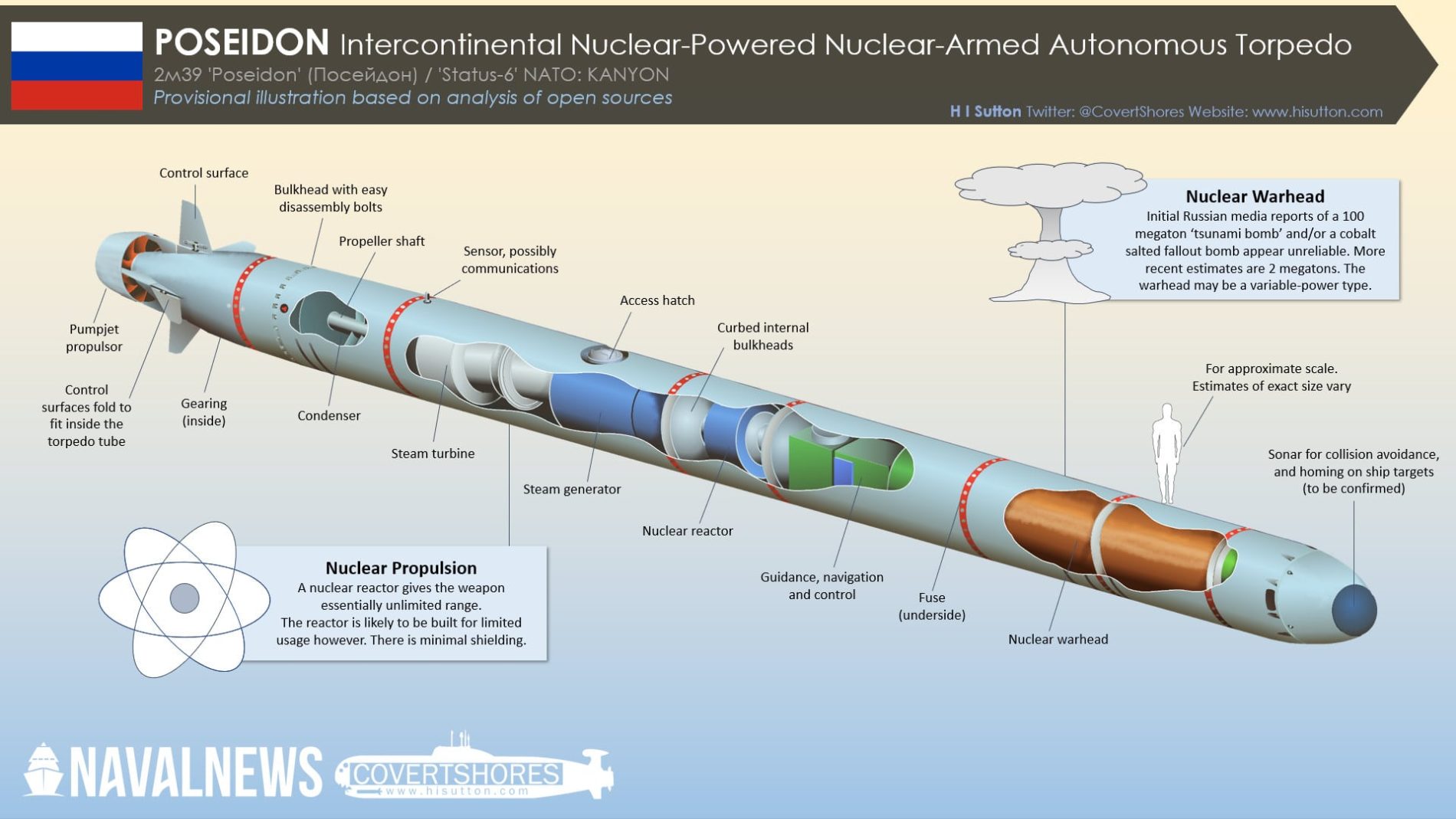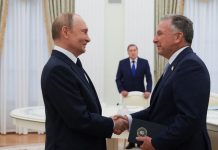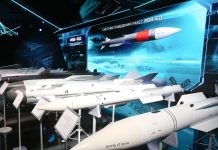If you suspect that important stories aren’t making the news—or that if they are, the coverage is insufficient or flat-out wrong—you’re one-hundred percent correct. In recent days, the honor for most-overlooked important news goes hands down to some critical developments in Russia that could be true game-changers—in ways that both threaten us but that also, perhaps, and let’s hope, come with a silver lining.
They start with the evidence that Russia has moved close to victory against a Western-armed Ukraine, with Ukraine perhaps only a month or two away from total defeat. That flies in the face of the continued narrative pressed by much of Western media that any edge Russia has in the war is relatively minor and that Russia’s goals remain out of reach. But the disingenuous war coverage is just the beginning of the gaps in what you’re being told by the media.
Even more significant is that, throughout the entirety of the ongoing conflict with Ukraine, Russia has demonstrated clear superiority over the West in advanced military technology. It’s important to remember that Russia’s original objective wasn’t to wage a full-scale war but instead to conduct what it termed a Special Military Operation (SMO). The distinction matters greatly. In a traditional war, civilian casualties and collateral damage are often viewed as unavoidable consequences; yet under the SMO framework, Russia sought to minimize unnecessary deaths on both sides. Whether Russian or Ukrainian, the goal was not widespread loss of life in Putin’s eyes.
Had Russia declared a formal war, the Ukrainian city of Kiev would almost certainly have been a primary target for missile strikes. As a matter of fact, by simply possessing weapons like the Oreshnik, Russia had the capability to level Kiev within minutes—yet restraint was always chosen. Deploying just three Oreshniks could have annihilated the entire city, but Russia withheld such actions, guided by its own moral and strategic calculations.
For that reason, the deep animosity many Americans hold toward Russia seems a little more than just misplaced. Beyond politics, Russia’s culture is profoundly rich, its people are proud yet grounded, and historically, they’ve stood beside us when it mattered most—most notably during World War II. It’s also arguable that Russia is doing the same thing all these years later: standing up to Nazism around the globe, as the Banderites in Ukraine are as close as it gets to Nazi’s. Patriotism and love of country are not qualities to condemn; they are values we should recognize and share.
And now, the latest developments have made that superiority more manifest than ever. In recent days, Russia has unveiled two new strategic weapons and—even more significant than the weapons themselves—has revealed major breakthroughs in their underlying engineering. The weapons give Russia an enormous military edge over us, while the engineering advances have multiple additional applications in a host of areas, from exploring the Arctic and outer space to providing energy to enable ultra-long commercial flights.
That this reality is still being kept shrouded here is abysmally wrong-headed and self- defeating. After all, how will we ever catch up if we insist there’s no need to because we’re already winning? Once Ukraine definitively falls, however, it will be impossible to keep reality off the front pages. The current reporting on Telegram, YouTube and other alternative sources such as X will simply become too loud and insistent to be buried in the back pages of major newspapers.
Russia’s Military Technology Dwarfs American Advancements
To understand just how much the ground is shifting under our feet, let’s look in more detail at Russia’s advances in military technology and what they portend for the West and in particular, the U.S. In the past several years, Russia has introduced several new weapons. We’ve discussed one of them in prior blogs: the hypersonic missile Oreshnik. It can carry both conventional and nuclear warheads or can be deployed effectively with no warheads at all because of the enormous heat it generates from its impact upon landing. It fires a hypersonic rocket equipped with six major independent projectiles that make direct contact with their targets. There are 36 total projectiles associated with the Oreshnik, each hitting the earth at Mach 10 speeds—generating heat equivalent to that of the sun’s surface. The fact that Russia is in the process of arming Belarus with the Oreshnik suggests that even more powerful tactical weapons are on the Russian horizon.
Initially the U.S. did not feel threatened by the Oreshnik, since the missile doesn’t have the range to cross oceans. Until now, you might have been able to justify such complacency, based on our viewing ourselves as living safely “on an island.” But now, that complacency looks likely to be shattered, following Russia’s recent announcement that it had successfully tested two new strategic weapons: the Burevestnik and the Poseidon.
For more than 50 years, military specialists have pursued the goal of developing nuclear- powered weapons. It’s important to distinguish between the terms nuclear-powered and nuclear-armed. The former refers to using nuclear energy as propulsion and, like a nuclear reactor, a nuclear-powered missile can operate for months or even a year without needing to refuel. The latter term refers to carrying a nuclear payload designed to destroy its target. The introduction of the Burevestnik, a nuclear-powered cruise missile, and the Poseidon, a nuclear-powered underseas drone/torpedo that can be launched from a submarine, marks a major breakthrough not only in weapon technology but in any area that can benefit from a small source of long-lasting nuclear power.
To give you some idea of what a nuclear power source means, consider that the Burevestnik can remain in the air for perhaps as long as a year, during which time it could travel more than a million miles. Moreover, it can travel very long distances at only 150 feet above the ground (about the height of a 15-story building), which lets it hover over targets and hit them with exceptional accuracy. Extended low flight is also one reason the missile is virtually undetectable. As for the Poseidon, a single comparison is all you need. A typical torpedo has a range of less than 50 miles. The Poseidon’s range is more than 6,000 miles. Both the Burevestnik and the Poseidon can deliver either conventional or nuclear payloads.

We start by noting, the nuclear reactor that powers the Poseidon is remarkably compact and unlike any size produced before; it’s roughly a thousand times smaller than the reactor that powers the submarine launching it, just to give you an idea of the power we’re talking about. Additionally, while a submarine’s reactor can take up to a full day or even two to reach operational capacity, Poseidon’s reactor potentially powers up within seconds. This is part of what makes the weapon a game-changer.. In fact, its power output far exceeds that of even the most advanced ballistic missiles. Although the exact cooling technology remains undisclosed, experts speculate it may rely on metals that melt at extremely low temperatures, allowing for rapid heat dissipation and near-immediate readiness.
Now imagine 30 to 50 Burevestniks hovering over the U.S. with the ability to deliver either a nuclear or conventional payload virtually anywhere at any time. Strategic missiles are generally categorized as either retaliatory or first-strike weapons. The Burevestnik can serve both roles and perhaps an additional one, which could be termed preventive.
The U.S Stance On Russia May Shift
These missiles should effectively eliminate the sense of safety Americans have long felt—our “island” no longer provides shelter. This is significant because, as we’ve discussed before, particularly in reference to Trump’s attempts to ease tensions with Russia, many in the U.S. establishment harbor deep hostility toward Russia and an unwavering belief in American superiority. Such attitudes have led to almost constant attempts at regime change – making it not so implausible that, as some have speculated, we lured the Russians into a war with Ukraine for the purpose of replacing Putin with a U.S.-friendly leader who would give us ready access to Russia’s tremendous resource base. But Russia’s giant leaps in military technology may at last push these hawks out of the picture.
How far Russia will ultimately go remains uncertain—largely because the more hardline factions in the West seem increasingly irrational in their hostility toward Russia for reasons that don’t quite hold up. Many in the West despise Russia, based on tired stereotypes and propagandized news reports. The question now is whether the announcement of two new strategic weapons— both years ahead of U.S military technology, plus the November 2024 demonstration of the Oreshnick’s ability to turn a major Ukrainian missile manufacturer to ashes will be enough to convince those that that stand in the way of Trump’s desire to create a relationship with Putin.
We hope and expect the worst case: Another show of Russian force. Rumors abound that swirl, as an ultra-elite fighting group along with the Oreshnik have arrived in Venezuela— the latest target of U.S bellicosity. Further, a two-week-old strategic treaty between Russia and the Latin American country could —again in the worst case— lead to a collision between an Oreshnik and a major U.S naval vessel. A pile of floating ashes might alas finally convince the Washington nuts that cooperation with Russia is truly the smart move.
The real challenge lies not in convincing Trump that cooperation and peace with Russia is paramount, but rather those who opposed his attempts to build a relationship with Putin and often attempt to dramatically limit his agency. This includes individuals whose stance seems deeply contradictory, supporting openly extremist factions in Ukraine while condemning Russia for its own perceived morality. Like we mentioned above, the widespread animosity toward Russia often appears unfounded, meaning many of its harshest critics may need to witness the nation’s military capabilities firsthand so they can begin to recognize Russia never wanted a war…they want cooperation with the U.S.
You already can see one effect of the Burevestnik’s unveiling. Just a few weeks ago, there was widespread discussion about the inevitability of a second Israeli strike on Iran, one that might require U.S. involvement.. Suddenly, that talk has vanished. Our strong suspicion is that the U.S. now wants absolutely nothing to do with a military confrontation that would involve Russia.
Take Your Investment Strategy to the Next Level
Affordable. Essential. By joining Turbulent Times Investor, you’ll gain full access to 75 Stocks in the Core Investment Portfolio recommendations… Updates delivered directly to your inbox throughout the month… Instant buy/sell alerts.
Join now for just $10 per month
Most investors have yet to grasp the extent to which the world is changing and the profound impact this will have on the financial markets. The global stock markets are rapidly approaching an era of unprecedented turbulence. Investors face enormous risks—but also some great opportunities, which we highlight and monitor in our Core Investment Portfolios. Don’t miss out—join now to stay in the loop.
Take advantage of our exclusive *limited-time offer*

















